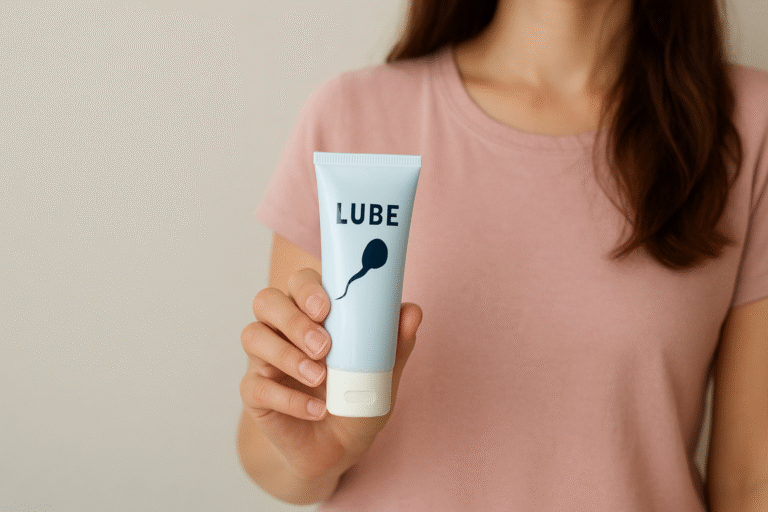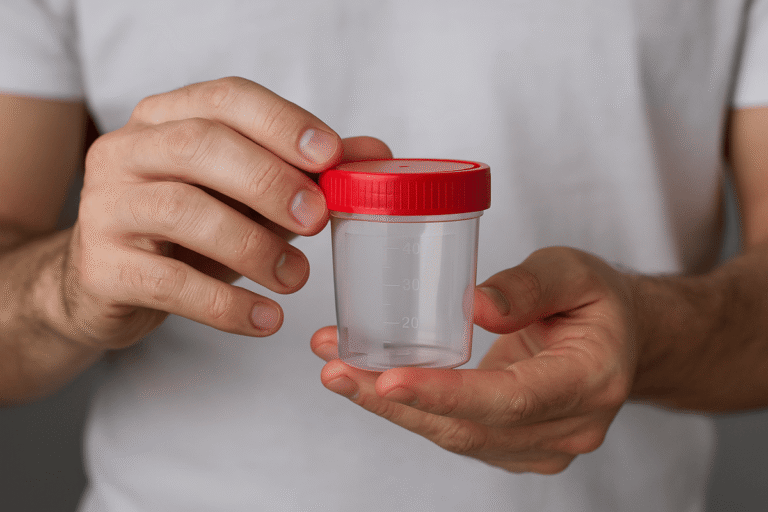The strong desire to start a family is a tremendous drive. People who have been diagnosed with Pelvic Inflammatory Disease (PID) may feel like their desire is clouded by worry and doubt. PID is a dangerous inflammatory disease that mostly affects the female upper reproductive tract (the uterus, fallopian tubes, and ovaries). It is one of the main causes of infertility that can be avoided.
About 1 in 8 women with PID will have trouble getting pregnant, which is a scary statistic that shows how closely PID is linked to future fertility. But even with these scary chances, there is a lot of hope, new medical discoveries, and knowledge that can help. To get from PID to motherhood and make sure you have a fruitful future, you need to know what PID is, what it could mean for you, and what precautions you can take to avoid it.
Pelvic Inflammatory Disease (PID)
Pelvic Inflammatory Disease (PID) is not one illness but a group of conditions. These conditions cause infection and inflammation to spread from the vagina and cervix to the upper reproductive organs. Sexually transmitted bacteria, primarily Chlamydia trachomatis and Neisseria gonorrhoeae, most often cause this inflammatory disease. But other germs introduced during gynecological surgeries, childbirth, miscarriage, or IUD insertion can also cause it.
The risk of this occurring is low and is most common in the first few weeks after insertion of the IUD. PID frequently works sneakily. Many cases are “silent,” meaning they have few or no obvious symptoms. This lets the harmful inflammation continue unchecked, which threatens a woman’s future fertility long before she realizes she needs care.
How PID Gains a Foothold
When germs break beyond the cervical barrier, which usually acts as a protective gatekeeper, PID’s journey usually begins. When germs enter the normally sterile uterus, fallopian tubes, or ovaries, the body triggers a strong inflammatory response. While inflammation is a natural defense mechanism, within the delicate confines of the reproductive tract, it becomes a double-edged sword.
The fight against the infection makes the area expand, turn red, and produce pus and other substances that cause inflammation. This strong inflammatory response can damage the structures essential for spontaneous conception, particularly the fallopian tubes. This damage is the primary biological pathway linking a diagnosis of Pelvic Inflammatory Disease with compromised future fertility potential, setting the stage for significant challenges ahead if not promptly and effectively addressed.
PID Causes and Risk Factors: Protecting Your Fertile Future
The main cause is not treating STIs (90% of cases are chlamydia or gonorrhea).
- Having multiple sexual partners
- Having PID or STIs in the past
- Douching (which pushes bacteria higher)
- Gynecological treatments (such as putting in an IUD, doing a D&C, or taking a biopsy)
- Being under 25 (the cervix is more likely to be weak)
To protect your future fertility, it’s important to know these risks.
The Critical Role of STIs in Triggering Pelvic Inflammatory Disease
Sexually Transmitted Infections are the main cause of PID. Chlamydia and gonorrhea excel at causing PID because they often cause no or mild initial symptoms. This delay leads women to postpone testing and treatment. These untreated germs can ascend from the cervix during this critical period. PID inflames the upper reproductive tract.
Regular STI testing, especially for sexually active young peopl and prompt treatment of infections are crucial. These steps help prevent PID and protect future fertility. Ignoring STI risks jeopardizes your long-term reproductive health. It increases your chances of developing PID and future fertility problems.
PID Symptoms and Diagnosis
Symptoms include:
- Pain in the lower abdomen or pelvis
- Bad vaginal discharge
- Painful urination
- Painful intercourse
- Bleeding
- Fever
There are no clear signs of silent PID!
Diagnosis includes
- A pelvic exam (to check for soreness)
- STI testing
- blood tests (to look for inflammation markers)
- Vaginal fluid analysis
- https://my.clevelandclinic.org/health/diagnostics/4995-ultrasoundUltrasound
Early diagnosis is very important to limit PID and damage to future fertility.
The Invisible Scars: How PID Directly Threatens Future Fertility
The inflammatory process causes physical damage that has a deep and frequently devastating effect on future fertility. The fallopian tubes are very fragile structures that serve as the main route for the egg to go from the ovary to the uterus, and where fertilization usually happens. When PID hits, the inflammation can create several serious complications that directly affect the chances of having a fertile future:
- Tubal Scarring and Blockage: Inflammation causes scar tissue (adhesions) to form in and around the fallopian tubes. This scarring can block the tubes partially or entirely, which stops the egg and sperm from meeting and leads to tubal factor infertility.
- Hydrosalpinx: Sometimes, scar tissue can block the termination of the fallopian tube near the ovary. The lining of the tube makes fluid that builds up and causes the tube to expand into a bloated, fluid-filled sac termed a hydrosalpinx. This fluid can be harmful to embryos and makes it much less likely that natural conception or IVF would work.
- Peritubal Adhesions: Scar tissue can form outside the tubes and attach them to surrounding organs, including the ovaries, uterus, or colon. This makes it hard for them to move normally, which is important for catching the egg following ovulation.
- Damage to the Ovaries: Severe PID can damage ovarian tissue and egg reserves or cause tubo-ovarian abscesses (TOAs). TOAs are painful, pus-filled infections needing immediate treatment. The amount of damage to the tubes and pelvis is closely related to how many PID episodes there are, how bad the infection is, and how quickly treatment is given. Even one PID episode can cause significant scarring. Early treatment is crucial for preserving future fertility options.
Effective PID Treatment to Preserve Fertility Potential
The most important thing you can do to safeguard your future fertility and limit harm is to get PID treated right away and aggressively. The main goals of treatment are to
- Get rid of the current infection to stop inflammation from happening.
- Stop complications that happen right away and problems that last a long time, like infertility and chronic pelvic pain.
Because PID is often caused by more than one type of bacteria, broad-spectrum antibiotic regimens that cover the most likely ones (chlamydia, gonorrhea, and anaerobes) are very important. Treatment typically combines injectable and oral antibiotics. Some cases require multiple oral antibiotics for at least two weeks. Severe PID cases require hospitalization for IV antibiotics. This includes pregnancy, abscesses, treatment failure, or severe nausea/vomiting preventing oral medication.
Testing and treating recent sexual partners is critical to prevent reinfection. Without this, patients face a high risk of recurrent PID and further complications.You must finish the entire course of antibiotics, even if your symptoms get better rapidly, in order to completely get rid of the inflammatory condition. This all-encompassing medical treatment is the best way to protect against the worst effects of PID and problems with getting pregnant in the future.
Also Read: Learn About Fibroids And Their Natural Solution
Beyond Antibiotics: Surgical Interventions for Complex PID Cases
Antibiotics are the most important part of treating PID; however, in very complicated cases of this inflammatory disease, surgery is needed. The most important sign is the existence of a tubo-ovarian abscess (TOA). Often, these abscesses need to be drained, which can be done with the help of an ultrasound or CT scan. If drainage fails or the abscess ruptures (a life-threatening emergency), surgery becomes necessary. This may involve laparoscopic removal of infected tissue or, in severe cases, open abdominal surgery (laparotomy). If you have severe, chronic PID with debilitating pain or frequent infections, consider permanent surgical options. If extensive tubal damage makes natural pregnancy impossible, surgery may be the best choice. Options include salpingectomy (removing damaged tubes) or hysterectomy (removing the uterus).
This is especially true if you don’t want to have kids in the future. For women who still want children, laparoscopy can assess the extent of tubal damage. It may also allow adhesiolysis (scar tissue removal) to improve tube function. However, the chances of restoring natural fertility after a lot of damage are often low. These actions show how severe advanced PID is and how important it is to get medical help early to avoid having to take such extreme measures.
Safeguarding Your Fertile Future Against PID
While therapy gives us hope, the only way to make sure a healthy, fertile future without PID is to avoid it in the first place. To prevent this harmful inflammatory condition, avoid its main causes. Also, monitor your reproductive health closely.
- Always using condoms correctly: Using latex condoms every time you have vaginal, anal, or oral intercourse. It greatly lowers your chances of getting chlamydia and gonorrhea, which are the main causes of PID.
- Mutual Monogamy and STI Testing: Being in a mutually monogamous relationship with someone who has tested negative for STIs lessens the risk. Being able to talk about sexual health is very important.
- Regular STI Screenings: Get tested for STIs often, especially if you have sex with new or numerous partners or are about to start a new relationship. Women under 25 who are sexually active and women over 25 who have risk factors should get tested for chlamydia and gonorrhea every year. Finding and treating STIs early stops them from spreading and causing PID.
- Prompt Treatment for Any STI or Symptoms: Get treatment right away for any STI or symptoms: If you have an STI, finish the whole course of therapy right away and make sure all of your partners do too. If you have any symptoms that could be PID or an STI, like odd discharge, pelvic pain, or bleeding, see a doctor right away. If you wait too long to get care, the illness can spread.
- Avoid Douching: Douching messes with the vagina’s natural balance of germs, which could push bacteria up and raise the risk of PID.
- Discuss IUD Insertion Timing: If you want one, make sure you get tested for STIs first. Insertion somewhat raises the chance of PID for a short time, mostly in the first three weeks, and mostly if there is an STI that hasn’t been found yet. Proactive STI testing lowers this risk.
Taking responsibility for your sexual health by following these steps is the best approach to keep your reproductive organs safe from the harmful inflammation of PID and actively protect your long-term chances of having children.
(A picture of a cheerful collection of families of different races, with couples with babies and children, showing that they have become parents.)
Conclusion: Hope, Healing, and the Journey Forward
The path from PID to fatherhood is not easy, especially because this inflammatory condition can make it harder to get pregnant in the future. The numbers are scary, and there is a real chance of injury and scarring to the tubes. But loss isn’t the only thing that makes up this story. It is also a story of amazing medical development, strength, and the power of choice. Early diagnosis and aggressive, proper treatment are still the best ways to fight severe problems that can affect your fertility. For people who can’t have children because to PID, the development of Assisted Reproductive Technologies, especially IVF, has changed the game, opening up very effective ways to become biological parents.
Also, knowledge is power. Everyone can protect their reproductive health and make sure they can have children in the future by learning about the causes and risk factors of Pelvic Inflammatory Disease, recognizing its often subtle symptoms, and following strict prevention measures, such as using condoms every time and getting tested for STIs on a regular basis. If you’ve had PID in the past and want to start a family, you can be sure that hope is real. Talk to your doctor, and if you need to, get help from a reproductive expert.
Also, learn as much as you can. It’s not just feasible to become a parent after PID; it’s a reality for many people who didn’t allow the chances determine their future. With careful planning, timely care, and the latest medical technology, the dream of parenting after PID is now a reality. Your future with children is still possible.





[…] Also read: PID and InFertility […]
[…] Also this: Pelvic Inflammatory Disease & Fertility: Protecting Your Path to Parenthood […]
[…] Also Read: Link Between PID and Fertility […]